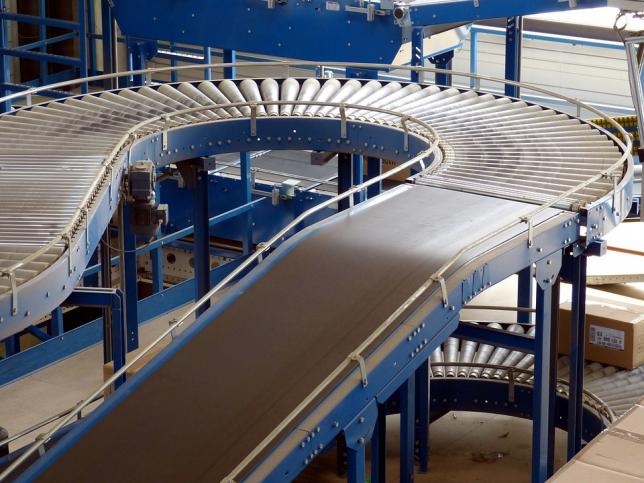All types of belt conveyor systems are ingeniously designed with a universally acceptable structure that is composed of two pulleys. The pulley graciously loops over a rotating material. The handling process is effortlessly achieved by a continuous procession of gears, buckets, hooks along with an extensive rubber belt. The belt is then firmly supported by rollers that are meticulously arranged along the system path. Additional rollers are situated at the center system to ensure that the weight of the load does not cause the belt to sag in the middle.
The invention of the industrial handling machines has significantly improved its structure from the 19th century primitive structure to today’s simple and flexible working. The underlying principle of the inner working of the belt now depends on friction drive. For improved efficiency, the pulleys are positioned at end points and are designed to work along with a closed transmitting belt. A conventional conveyor system has two pulleys: the transmission drive pulley which functions to rotate the belt, and the bend pulley for controlling the movement and direction of the belt. The pulleys are motor driven and work through reducer mechanism. The belt relies on friction drag to swiftly move along the pulleys.
The basic structure is the fundamental framework for handling all systems of different configurations and sizes. This mechanism allows companies to design flexible and adjustable products that best fit industrial and business needs. The inner mechanism of the system is engineered in pneumatic, vibrating, flexible, vertical and the heavy duty belt conveyor.
With over three decades of working experience, Norpak handling fully understands the mechanism of all types of belt conveyor machines. Our exceptional expertise has allowed us to design a wide range of products and industrial solutions. We provide both simple and complex systems for your business and industrial needs. Our company is the most sort out provider for quality and flexible conveyor product.










